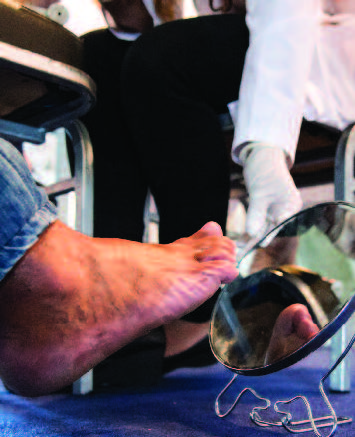
Every three years, a health center completes an operational site visit (OSV) during which numerous program requirements are reviewed, including quality management. The Uniform Data System (UDS) quality measures, defined by the Health Resources and Services Administration (HRSA), paint a picture of how the health center is progressing to improve the health of its patients. The diabetes measure asks health centers to determine how many patients between the ages of 18 and 75 with diabetes had a hemoglobin A1c of greater than nine. Nationwide, the number of patients with diabetes with an A1c greater than nine -- a level indicating their diabetes is not in control -- has been slowly increasing.
“We’re working with a population that has a gradually higher percentage of uncontrolled diabetes,” said Candace Kugel, FNP, CNM, MS, Migrant Clinicians Network’s Specialist in Clinical Systems and Women’s Health, during MCN’s recent webinar on the HRSA Diabetes Quality Improvement Initiative. The nationwide landscape requires health centers to increase their attention on diabetes and build strategies to address the epidemic of out-of-control diabetes in the US.
During the OSV, health centers are presented with a unique technical assistance opportunity to support their diabetes improvement efforts through the Diabetes Performance Analysis session. In addition to reviewing the UDS diabetes measure and the health center’s current figures and trends over time, the health center and the HRSA review team perform a root cause analysis and then build together a list of three action steps that the health center can take to make a bigger impact. Learn more about the Diabetes Quality Improvement Initiative and prepare for an operational site visit by watching MCN’s webinar, now archived on MCN’s Archived Webinar page: https://www.migrantclinician.org/archived-webinars.html.
Additional Resources:
HRSA Diabetes Quality Improvement Initiative webpage: https://bphc.hrsa.gov/qualityimprovement/clinicalquality/diabetes.html
Diabetes self-management tools: https://www.cdc.gov/diabetes/dsmes-toolkit/
Health Network and PRAPARE
In 2016, just as PRAPARE was set to launch, Migrant Clinicians Network was beginning to develop its new database to better serve patients enrolled in Health Network, MCN’s bridge case management program. Over the course of the following year, MCN configured the new database to allow for the integration of PRAPARE data, in which one health center’s PRAPARE data can be transferred to the next health center, as a mobile patient moves.
“When we started thinking about that data and [Health Network] case management work, so much of case management isn’t just ‘are you taking your medication every day?’ It’s more about, ‘How can I help you access care and manage your health in general?’” explained Anna Gard, RN, who assisted MCN in the development of the new database. “One piece of this is: ‘Let me help you find a health center.’ But the larger pieces around effective case management are, ‘How are you going to get there? Is there public transportation? How are you going to pick up your medications if you live in a hostile community and you’re afraid of leaving the house?’ PRAPARE gives a structured format to capture [these] data, in a form that’s been tested and validated.”
As more health centers provide case management and chronic care management to address the social determinants of health, Gard noted, integration of the PRAPARE data with Health Network, a virtual case management, seemed to make sense. Now, the Health Network team is working to fit PRAPARE into their own workflow.
Saul Delgado, Health Network Data Specialist, who has been integral in building and launching Health Network’s new case management system, notes that asking such personal questions over the phone, when a patient doesn’t have transferrable PRAPARE data from a previous health center, can be challenging. “When we call, the patient doesn’t know you. They’re very scared to answer these kinds of personal questions, whereas when you go the clinic, you at least see the nurse or case worker face-to-face,” he explained. But he recognizes the utility of the data, and has developed the PRAPARE data screens within the database to be easily accessed from the main patient information screen. With drop-down menus, Health Network Associates can populate the information they hear from patients, like how many people live with them in their household, or if they’re worried about losing their home. The information, either attained from a previous health center or inputted by a Health Network Associate, will be transferred when the mobile patient gets to his or her next destination, just as the basic medical records do.
“Health centers are doing more to integrate social and behavioral determinants of health, and we’re recognizing that all of those things have to be integrated with care management. So we’re on the forefront,” Gard concluded.

Read this article in the Spring 2020 issue of Streamline here!
Sign up for our eNewsletter to receive bimonthly news from MCN, including announcements of the next Streamline.

